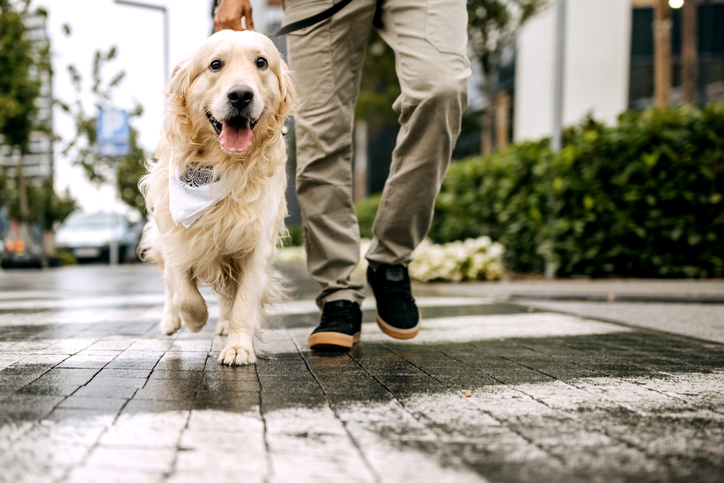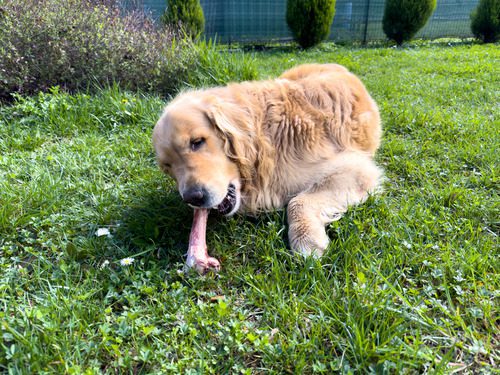How Much Exercise Does My Dog Need?
If you have a dog, you probably already know they need exercise. But how do you know the right amount of exercise for your pet? What are the factors that contribute to their exercise routine? Is there anything you need to keep in mind when choosing how much exercise you provide every day?
Below, you’ll find a list of some of the best methods you can use to determine how much exercise your dog needs. With the help of this guide, you can help your dog stay active without overdoing it, and you can improve their overall health and wellness, too.

Age
Age is one of the most important factors to keep in mind when determining how much exercise your dog needs. Your pet’s activity and mobility will change as they age, so take this into consideration when making an exercise plan.
Puppies have a lot of energy, but they also expel that energy fast and need to take a lot of naps to make up for it. Long walks can be hard on a developing puppy’s body, too. Senior dogs may have mobility issues and health concerns that make extended exercise difficult for them as well.
Size
Although it may go without saying, most larger dogs need more exercise in a day than most small dogs. Even if a small dog has tons of energy and is very hyperactive, they may not have the physical stamina or ability to exercise for a long time. And even if a big dog is very lazy and prefers to just cuddle, they need to get activity in for the day, too.
Your dog’s size is not the only factor that contributes to her exercise needs, but it can make a big difference in how you view their activity requirements.
Breed
Some breeds are naturally more active than others. Breeds that come from working and herding lines, for example, are likely to be able to run and play for longer stretches of time than those who are part of the toy category. Despite this difference, however, individual dogs may vary.
Some breeds also have physical limitations that make them poor candidates for extended exercise. Pugs, for example, have such short snouts and faces that they have difficulty breathing even when they’re at rest. Overexertion can be very dangerous for breeds like this, so limited exercise—and more mental stimulation—is key.
Physical Health
Your dog’s general physical health will help you determine how much exercise they can safely enjoy every day. A healthy adult dog with no underlying complications can exercise for an hour per day without cause for concern, in most situations. On the other hand, a dog who has an underlying health condition may not be able to work as hard or move as much, and their exercise should be adjusted to accommodate for this.
Your veterinarian can help you choose the right exercise plan, routine, and schedule for your pet based on their individual health needs. Be sure to work with your vet for specific recommendations for your dog.
Overall Lifestyle
Dogs who spend a lot of time hiking, practicing agility, or jogging with their human family members are likely going to need more exercise per day than other dogs. On the other hand, if your dog is a couch potato, they probably don’t need as much activity to help stay fit and healthy.
Consider your dog’s overall lifestyle to determine how much exercise they may need. Remember, though, not to overdo it. Even a dog who is very used to exercise and activity needs to take a break sometimes and could be at risk of injury if pushed too hard.
Weather and Climate
When it comes to exercising your dog outside, it’s important to consider the weather and climate where you live. For example, if you live in a very hot and humid location, you need to keep your outdoor exercises quick and concise—for your pet’s health as well as your own.
Cold climates also require shorter outdoor playtimes. If you want to exercise your dog indoors, look for activities that engage you both and encourage your pet to stay active for at least 30 minutes per day.
Create Your Dog’s Exercise Plan Today
Based on this information, it should be easier to narrow down just how much exercise your dog needs each day. On average, try to aim for about 30 minutes of exercise each day, and increase or decrease from there depending on your dog’s specific needs and health.
If you have any further questions about your individual dog’s health, talk to your Heart + Paw vet for more information. Visit one of the Heart + Paw locations or book an appointment online to talk with a vet to help you choose how much activity to provide for your dog in a day. The veterinarian can let you know if there are any health concerns to keep in mind, too.
Recent Posts
Can Dogs Eat Ham?
Ham is a popular meat found on many dinner tables, especially during the holidays. As a dog…
8 Signs and Symptoms of Diabetes in Dogs
Caring for a dog means being tuned in to the subtle changes that can reveal their overall…
Why Dogs Can’t Eat Chocolate and Tips for Keeping This Sweet Treat Out of Their Reach
Chocolate is a beloved indulgence for us, but for our dogs, it’s a hidden danger that can…
Why Cat Teeth Cleaning is Important For Your Pet’s Health
As a cat owner, you know how important it is to care for your feline friend’s overall…
Cat Body Language: A Guide To Understand What Your Cat is Telling You
Imagine trying to communicate without words, relying solely on subtle gestures, glances, and movements. This is how…
About Us
Heart + Paw was founded in 2018 by Chief Veterinary Officer Dr. George Melillo, who currently serves the Mid-Atlantic area. Heart + Paw offers a combination of veterinary care, pet grooming, and dog daycare to help be a resource in your pet parenthood journey.
We'd Love to Meet Your Four-Legged Friends
Find out how the friendly veterinary team at your local Heart + Paw can help your pets live longer, healthier lives by searching for a location near you.





